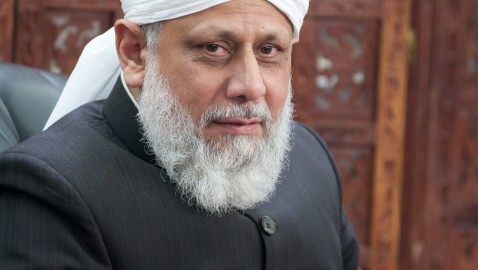by Hina Latif
The Air Force Research Laboratory have recently reissued a report entitled Countering Violent Extremism: Scientific Methods & Strategies which was developed to discuss potential theories of radicalization. It features a chapter titled “A Strategic Plan to Defeat Radical Islam” written by Dr. Tawfik Hamid. Although a disclaimer states that the opinions of the authors do not reflect official policy or positions of the Air Force Research Laboratory, it raises scholarly concern based on the input given by Dr.Hamid’s work that discusses hijab as passive terrorism.
The chapter is meant to help explain why a Muslim man would become radicalized –yet instead presents quasi-Freudian concepts. It tells us that militant groups are driven by ‘sexual deprivation’, and that headscarves worn by Muslim women represent a form of ‘passive terrorism.’
As an Ahmadi Muslim woman who wears the hijab by my own choice, I find the suggestion that covering my hair represents ‘passive terrorism’ incomprehensible. I work as an adjunct professor of sociology. In this role I am able to clarify many misconceptions regarding Islam and Muslims, and respond to my students’ personal curiosity. Many misconceptions concerning women stem from the concern that the hijab is oppressive. I explain that the hijab enables me to be free of becoming a target of sexual objectification and instead be regarded as an individual with intellectual ability without compromising my physical appearance. Hamid’s argument is full of irrelevant statements and requires much more scholarly input and research for his part of the paper.
Personally, this view raises concerns about how American society continues to objectify women as sexual beings rather than equals. Pinning the hijab as a form of passive terrorism is a decoy to prevent society from dealing with actual issues, the hyper-sexualization of women.
While the chapter tries to implicate “sexual deprivation”–this is itself based on objectification of women. This simple logic has roots in the social construction of masculinity and our society’s (yes, the Western society’s) way of allowing men to think, act, and behave in such manner towards women and treat them as objects rather than their equals. Islam challenges these societal norms, for many Muslim women who practice the concepts of modesty understand and exemplify humility in order to avoid the strong pressures from societal norms of sexual objectification.
Women and girls are often defined by their physical appearance. From a very early age, girls learn to be self-conscious about their weight, body shape, hair type, and every other aspect related to beauty. For boys and men the process of beauty objectification does not occur with the same level of repercussions. Based on my experience with the practice of wearing the hijab, I feel confident about my physical appearance by not allowing society to judge and ridicule me in degrading ways.
Recently, the launch of The True Islam Campaign further validated the rights of women. The campaign argues that Islam encourages equality, education, and empowerment for women as well as encompasses a universal declaration of human rights. The campaign promotes equal rights for all women, Muslim or non-Muslim, wearing the hijab or not, and advocates for women not to be devalued within society as a means of sexual objects. I believe it would benefit the Air Force Research Laboratory to revise or replace Dr. Hamid’s work for quality work as they have with the other contributors. If combating terrorism is the goal of his section, then I highly recommend that he review the True Islam campaign to gain an in-depth perspective of the true teachings of Islam as well as grasp the real issues related to radicalization. Otherwise, the passive terrorism noted in this work comes from suggesting that a piece of cloth a source of terror; which is an insult to the millions of Muslim women who observe modesty.


